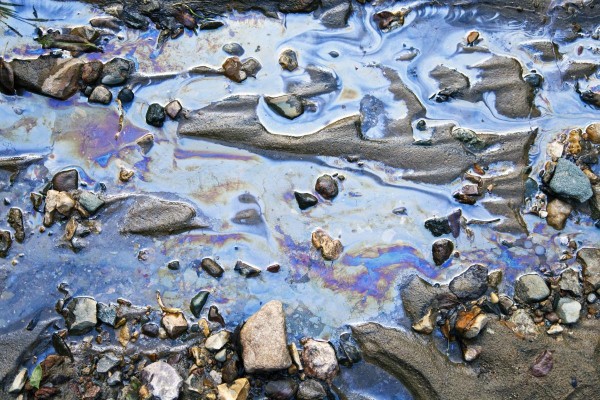Smith, the Water Defense scientist, has consulted for the Environmental Protection Agency and other government offices on more than 50 oil spills and spent two years studying the oil wastewater used for irrigation in Kern County.
He traveled the eight-mile Cawelo canal, taking samples of the water as it moved from Chevron's oil fields through the irrigation canals to farmers' fields. He said he gathered samples only from areas that were publicly accessible. He took samples from 10 points, collecting water from a number of depths at each site through a process that he said is more comprehensive than the sampling state and local authorities require.
The samples Smith collected contained acetone and methylene chloride, solvents used to degrease equipment or soften thick crude oil, at concentrations higher than he said he had seen at oil spill disaster sites. Methlyene chloride, by the way, is classified as a potential carcinogen. The water also contained C20 and C34, hydrocarbons found in oil, according to ALS Environmental, the lab that analyzed Smith's samples.
Methylene chloride and acetone are used as solvents in many industrial settings. Methylene chloride is classified as a potential carcinogen.
"One sample of the recycled Cawelo irrigation water, for example, registered methylene chloride as high as 56 parts per billion. Smith said that was nearly four times the amount of methylene chloride registered when he tested oil-fouled river at the 2013 ExxonMobil tar sands pipeline spill in Mayflower, Ark. That spill was declared a federal disaster, spurred evacuations and resulted in a $2.7-million fine for the company.
Chevron told The Times it does not use acetone or methylene chloride in its oil extraction process. The company would not disclose the fluids used in drilling or well maintenance."
But don't worry. It's perfectly safe.
The water district is unconcerned. One board member (who grows pistachios and citrus, by the way) feels that the water testing being done is accurate.
Mark Smith, a board member of the Cawelo Water District who grows pistachios and citrus using treated water from Chevron, said he had "never heard a word" about contamination from the oil production process and is satisfied that the water testing is adequate. Glenn Fankhauser, assistant director of the Kern County Department of Agriculture and Measurement Standards, concurs. "As long as they're treating the water to the point where it's allowed by whatever agency governs the quality of water, I think it would be OK."
Note the blithe unconcern shown by those who are, of course, profiting greatly from the use of toxic water to irrigate food crops.
The thing that blows my mind is how small family farms are being regulated out of business to keep us "safe" but this stuff goes on and no one in "authority" bats an eyelash. But somehow, we who are concerned about the fact that those with lots of money are not regulated are the kooky conspiracy nuts. As I've written about at length, with regard to something as important as water, you must take the responsibility for safety upon yourself.
Here is a list of companies whose farms receive oil industry wastewater
So, as it turns out, those cute little Halo oranges aren't really very angelic.
An environmental group called Food and Water Watch received a list from the district of the names and addresses of companies that use its water.
Look for these labels in the grocery store, and avoid them until/unless they are proven safe, because, as per a report by Mother Jones, they're most likely grown using oil industry wastewater.
- Sunview (table grapes, raisins, persimmons, and prune plums)
- Wonderful Citrus (Halos and Cuties - this company also owns Fiji Water, POM Wonderful, and the world's largest pistachio and almond growing operation)
- Trinchero Family Estates (wine)
- Bee Sweet Citrus (mandarins, oranges, and lemons)
It all comes back to the same refrain: if you don't grow it yourself or know the grower personally, you really can't trust it. We must go back to the days when food was sourced locally so that we can be our own watchdogs.
Sources:


















